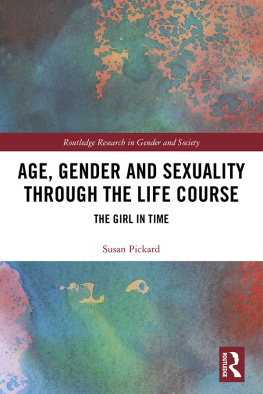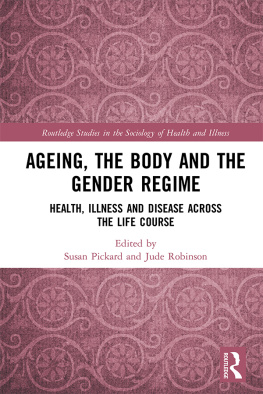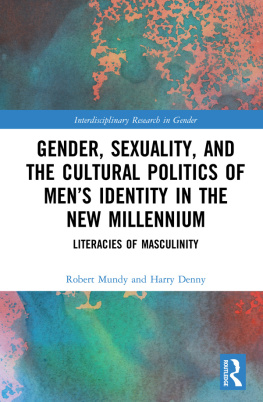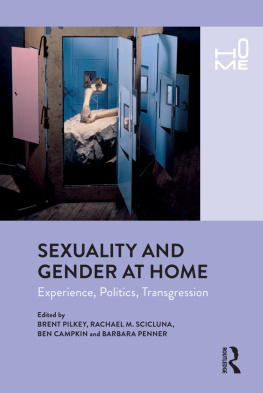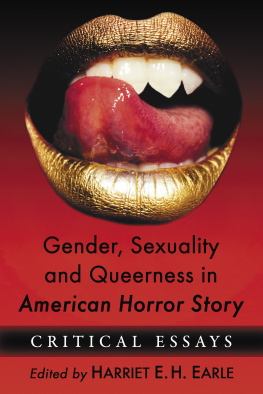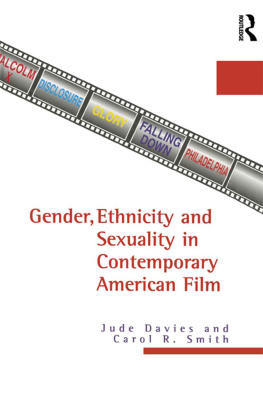Age, Gender and Sexuality through the Life Course
Age, Gender and Sexuality through the Life Course argues that the gendered structure of temporality (defined in the dual sense of everyday time as well as age and stage of life) is a key factor underpinning the stalling of the gender revolution. Taking as its central focus the idealised young woman who serves as the mascot of contemporary success, this book demonstrates how the celebration of the Girl is (i) representative of social mobility, educational and professional achievement; (ii) possesses diligence, docility and emotional intelligence, and (iii) displays a reassuring sexuality and youthfulness but is constructed from the outset to have a fleetingly short life span.
Pickard undertakes a theoretical and empirical exploration of the contemporary female experience of education, work, motherhood, sexuality, the challenge of having-it-all. Furthermore, through additional analysis of the transitional reproductive regime from youth into mid-life and beyond, this insightful monograph aims to demonstrate how age and time set very clear limits to what is possible and desirable for the female self; yet how the latter factors also, if used reflexively, can provide the key means of resisting and challenging patriarchy.
This book is aimed at a broad interdisciplinary audience located in gender studies, age studies, culture studies, sociology and psychology; accessible for advanced undergraduates and beyond.
Susan Pickard is Reader in Sociology in the Department of Sociology, Social Policy and Criminology, University of Liverpool, UK.
Routledge Research in Gender and Society
Women, Horseracing and Gender
Becoming One of the Lads
Deborah Butler
Sexuality after War Rape
From Narrative to Embodied Research
Nena Monik
Bodies, Symbols and Organizational Practice
The Gendered Dynamics of Power
Edited by Agnes Bols, Stine Helena Bang Svendsen and Siri ysleb Srensen
Beyond Gender
An Advanced Introduction to Futures of Feminist and Sexuality Studies
Edited by Greta Olson, Daniel Hartley, Mirjam Horn-Schott, and Leonie Schmidt
Girls, Aggression and Intersectionality
Transforming the Discourse of Mean Girls
Edited by Krista Mcqueeney and Alicia A. Girgenti-Malone
Modern Motherhood and Womens Dual Identities
Rewriting the Sexual Contract
Petra Bueskens
Age, Gender and Sexuality through the Life Course
The Girl in Time
Susan Pickard
For more information about this series, please visit www.routledge.com/sociology/series/SE0271.
Age, Gender and Sexuality through the Life Course
The Girl in Time
Susan Pickard
First published 2018
by Routledge
2 Park Square, Milton Park, Abingdon, Oxon OX14 4RN
and by Routledge
711 Third Avenue, New York, NY 10017
Routledge is an imprint of the Taylor & Francis Group, an informa business
2018 Susan Pickard
The right of Susan Pickard to be identified as author of this work has been asserted by her in accordance with sections 77 and 78 of the Copyright, Designs and Patents Act 1988.
All rights reserved. No part of this book may be reprinted or reproduced or utilised in any form or by any electronic, mechanical, or other means, now known or hereafter invented, including photocopying and recording, or in any information storage or retrieval system, without permission in writing from the publishers.
Trademark notice: Product or corporate names may be trademarks or registered trademarks, and are used only for identification and explanation without intent to infringe.
British Library Cataloguing-in-Publication Data
A catalogue record for this book is available from the British Library
Library of Congress Cataloging-in-Publication Data
A catalog record has been requested for this book
ISBN: 978-1-138-85463-5 (hbk)
ISBN: 978-1-315-72098-2 (ebk)
Typeset in Times New Roman
by Wearset Ltd, Boldon, Tyne and Wear
Let no man steal your thyme (traditional folk song)
Come all you fair and tender maids
That flourish in your prime.
Beware, beware keep your garden fair.
Let no man steal your thyme;
Let no man steal your thyme.
For when your thyme is past and gone,
Hell care no more for you,
And every place where your thyme was waste
Will all spread ore with rue,
Will all spread ore with rue.
Contents
Acknowledgements
I would like to thank colleagues at Liverpool and beyond for inspiring conversations and encouragement both during the writing of this book and the many years of its gestation. Thanks to Jude Robinson, Sandra Walklate, Barry Godfrey, Paul Jones, Nicole Vitellone and Steffi Doebler. Special thanks to Lisa Hawksworth for her library support. Thanks to my students for fresh thoughts on an old problem. Thanks in particular to the students who took my Age Studies module and thanks to Keith Walker, most accomplished doctoral student ever. Thanks also to my friends Neil Brocklehurst, David Redford-Crowe and Fernando Rapado, Francis Howard encouraged me to take risks, and for that I am deeply grateful, and for emboldening a naturally timid instinct.. Love and thanks to David and Violet. All of you helped keep me afloat during the most gruelling periods of writing. Thanks to all at Routledge, especially Emily Briggs, for her patience and encouragement. Most of all, thanks to my mother Isabel, to whom this book is dedicated: she has taught me more about womens journey through time than any book that will ever be written.
Introduction
Femininity and age, or, how time is not on our side
The Girl is the emblem for late modern success. She symbolises all the qualities admired by contemporary culture: diligence, self-surveillance, emotional intelligence, sexuality and above all youthfulness. The sign of the times, she is represented by female heroes and icons who are leaning in, scaling the heights of politics and the professions and leading the feminisation of culture and society. Yet there is a catch. The clock is ticking and early on, by the time the Girl reaches her late twenties or early thirties, the carriage is already threatening to turn into a pumpkin. Girls younger than this may shrug their shoulders and deny that such matters as the reversing of the gender pay gap, the career stalling, the creeping back of traditional gender roles in the context of work environments, relationships and especially parenthood, will happen to them; their generation is surely different. However, if the Girl pays attention she may recognise that right now there are also demands on her everyday time that her male peers do not share. They include: time given to others; too much time spent daydreaming, but not really planning, about what the future may bring; time stolen from sleep in order to study in a way that allows her the time to be a good daughter and a good friend or girlfriend, perhaps even experiencing the ensuing fatigue as emotionally satisfying, indicating that she has restored some cosmic balance that might otherwise be too tipped in her favour. Moreover, if she peers ahead a decade or two at the women who have reached mid-life she may not much like what she sees in the part-time labour economy, the attempt to balance work and home life, the stalling of once-cherished ambitions. Indeed, if she reflects just for a moment on the difference, she may begin to see that the clock is not on her side now, though up to that moment she might have thought that it was; that indeed age and time are conspiring against her even from her mid-twenties or earlier when she is told she needs to work on staying youthful because youth is beauty and beauty is the first impression of total success (Martin, 2007: 16), as girls today know all too well (Brumberg, 1997); because she has a limited window of opportunity in which to have babies, and needs to plan her career just right and find a good man in good time if she is to have-it-all; because the opposite to having-it-all is failure, which will be entirely her own fault.

